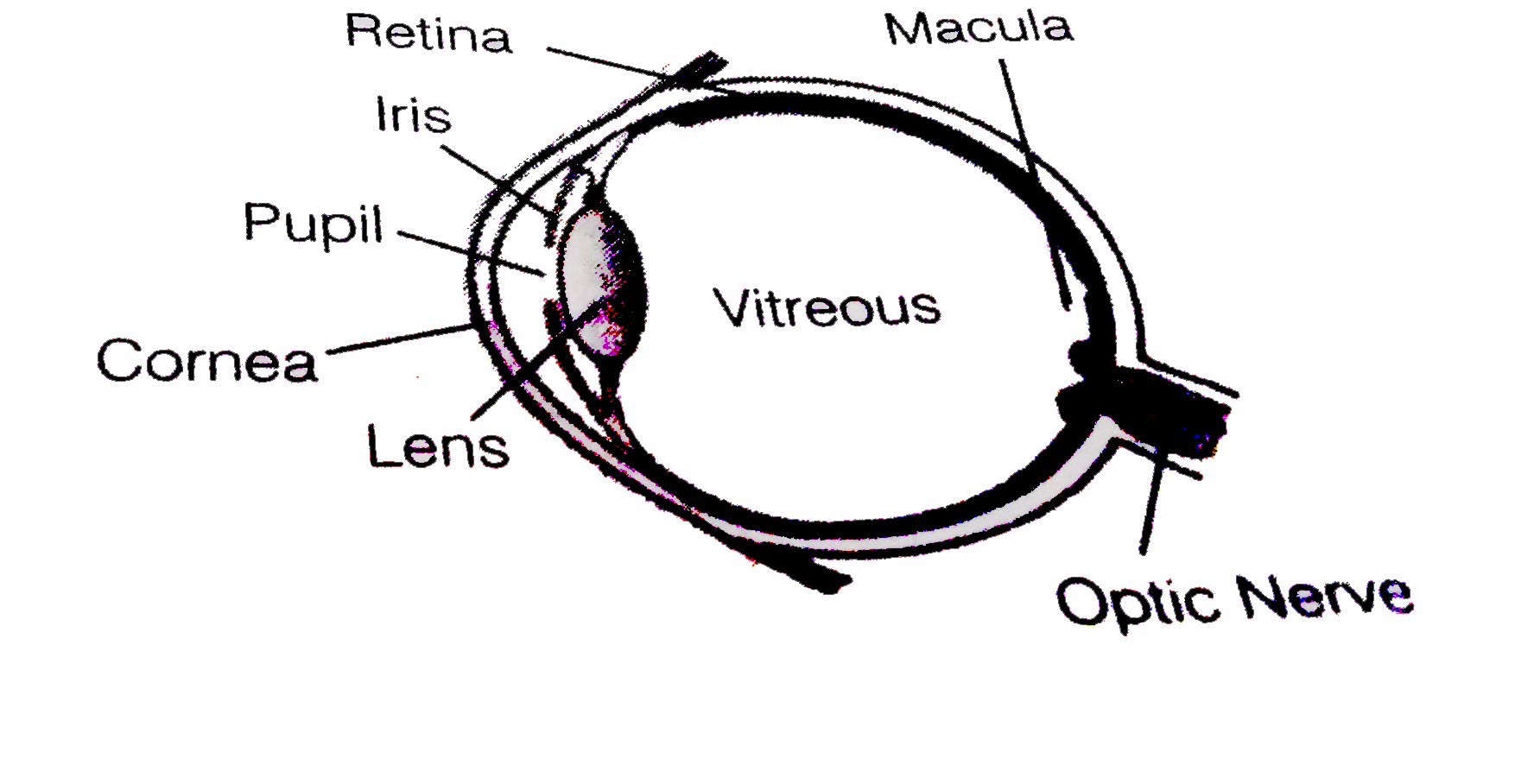Explain the structure and functioning of human eye. How are we able to see nearby as well as distant objects?
Text Solution
The structure and functioning of human eye are as given below
Cornea Cornea is transparent. It is responsible for, most of the refraction of light rays towards the retina.
Iris Iris is a dark, circular muscular diaphragm behind the cornea. It gives the eye its colour. It also controls the pupil size and thus controls the amount of light entering the eye.

Pupil Pupil is surrounded by the iris. It regulates and controls the amount of light entering the eye.
Retina The retina is the innermost layer of the eye. It contains an outer pigmented layer and an inner nervous layer which contains the photo receptors (rods and cones). cone cells are coned shaped and rod cells are rod shaped.
Optic nerve The optic nerve connects the eye to the brain. The nerve fibres carry impulses from the retina to the visual cortex.
Eye lens The eye lens is made up of a fibrous, jelly-like material. It is transparent and has biconvex structure. It forms an inverted real image of the object on the retina and also separates the aqueous and the vitreous humours.
Vitreous humour Vitreous humour is clear, semi-solid supporting the eye ball.
The eye lens forms an inverted real image of the object on the retina which sends image-electric signals to brain via the optic nerves. The brain reconstruct erect image of objects and make us see as they are. For second part.
|
Topper's Solved these Questions
Similar Questions
Knowledge Check
Explain how our eyes can detect both nearby and faraway objects.
ASclera.BPupilCOptic nerveDCiliary musclesWe cannot see the details of a distant object because:
Athere is a defect in our eyesBthe light rays are absorbed and scattered in this wayCthere is a limit of resolution in our eyesDthe objects are too far awayHow does the eye change in order to focus on near or distant objects ?
AThe lens moves in or outBThe retina moves in or outCThe lens becomes thicker or thinnerDThe pupil gets larger or smaller
How are we able to see nearby and also the distant objects clearly?
View SolutionHow are we able to see a moving picture?
View SolutionExplain the structural and functional significance of fovea in the human eye.
View SolutionHow do we see objects?
View SolutionDefine the term power of accommodation. Write the modification in the curvature of the eye lens which enables us to see the nearby objects clearly?
View Solution
